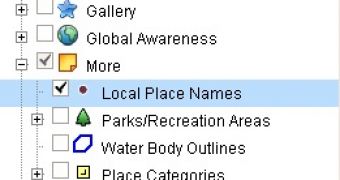Most, if not all of Google's products are global, they're supposed to work the same in every language and in every country, of course, with the necessary tweaks and adjustments.
But Google Maps and Earth present a special problem, they have to cater to the local audiences not only with the interface but with the actual content as well.
Different countries have different names for cities, places or even entire other countries, and this has to be reflected in the maps users from these places see.
Until now, Google displayed several versions of a city name, both the one that would feel familiar to the user but also the original name, written in the native script of the place.
Google has updated this so that Earth now only displays the name that is common for the language of the user, to make the maps easier to read and to fit more information without making them feel crowded.
"We realize that a city may be referenced in different ways, in different languages. Presenting all of these names on the map in a single view can sometimes make the map harder to read, not to mention, may even detract users from other, useful information," Kailen Wright, Geo Data Specialist at Google, wrote.
"In the interest of providing the smoothest browsing experience possible, we’ve updated Google Earth so that each city has just one label in a user’s default language," Google announced.
Users can change the default language in Google Earth if it's not automatically set properly, or if they want another perspective.
There is also the option of displaying both the original name and the common one, if you feel you need both versions. All you have to do is to enable the "Local Place Names" in the "More" folder.

 14 DAY TRIAL //
14 DAY TRIAL //